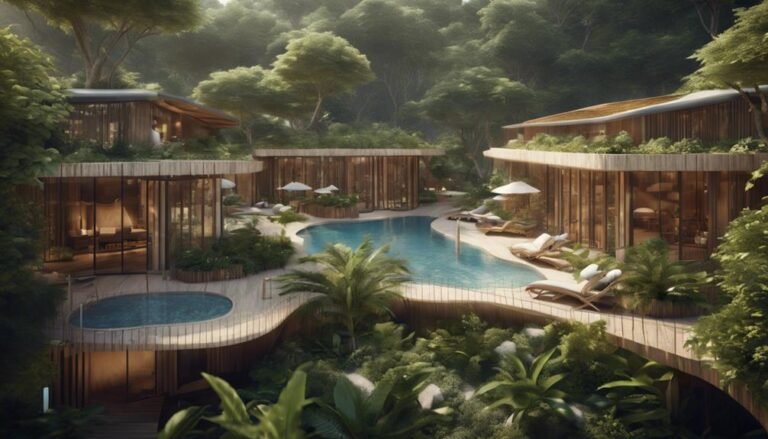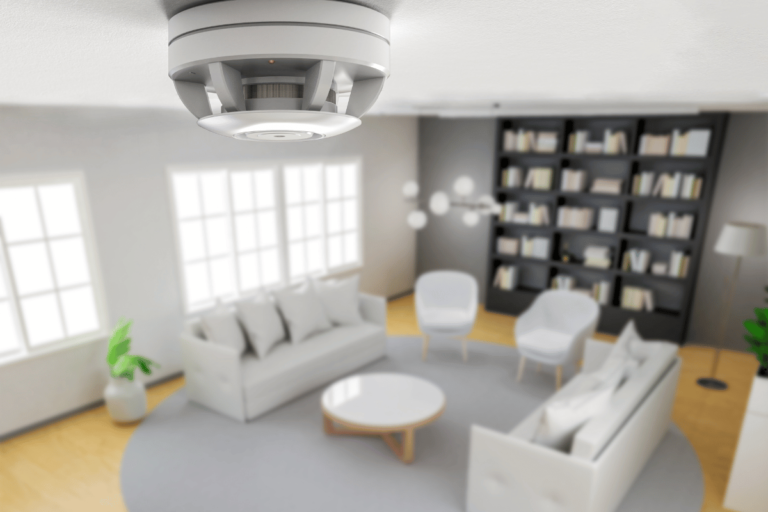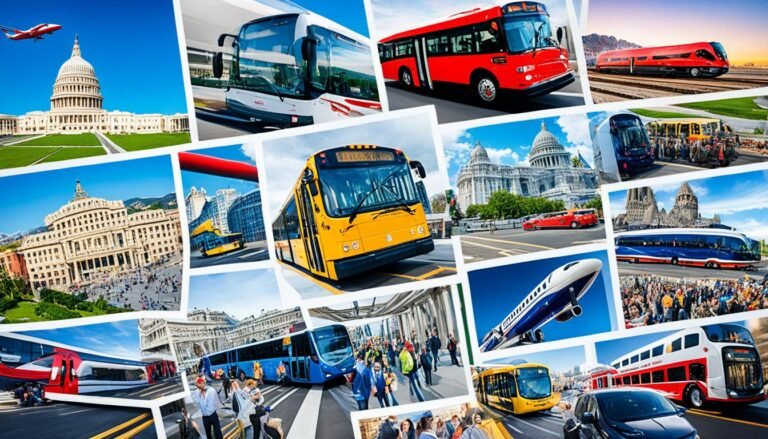Work, Play, Stay: Designing Hybrid Spaces for the Modern Traveler
Modern travelers seek accommodations that seamlessly blend work and leisure, leading to the emergence of hybrid spaces. These spaces offer versatile environments that cater to the multifaceted needs of contemporary nomads. By combining functionality with aesthetics, these designs prioritize user-centric approaches and adaptability. From ergonomic furniture for comfort during work hours to wellness amenities fostering relaxation, these spaces aim to enhance the overall traveler experience. If you wish to explore further how these hybrid spaces are revolutionizing the way we perceive travel and stay experiences, continue discovering the evolution of traveler preferences and the design principles for creating these dynamic environments.
Key Takeaways
- Hybrid spaces blend work and leisure for modern traveler needs.
- Design principles focus on flexibility, user-centricity, and adaptability.
- Ergonomic furniture enhances comfort and productivity in hybrid spaces.
- Social interaction opportunities through communal spaces and events.
- Wellness amenities and personalized experiences cater to individual preferences.
Evolution of Traveler Preferences
As the landscape of travel continues to shift and adapt to the changing needs and desires of modern individuals, the evolution of traveler preferences serves as a significant focal point in the design of hybrid spaces. With the rise of remote work trends and the increasing prevalence of flexible schedules, travelers are seeking accommodations that cater to their multifaceted needs. The modern traveler values spaces that seamlessly blend work and leisure, allowing them to stay connected and productive while on the go.
Flexibility is paramount in accommodating travelers who may need to attend virtual meetings or complete tasks during their stay. As a result, hybrid spaces are being designed to provide functional work areas equipped with high-speed internet and comfortable seating arrangements. These spaces not only cater to the professional needs of travelers but also offer aesthetic appeal and comfort to enhance the overall experience.
The Rise of Hybrid Spaces
Hybrid spaces have become a focal point in the domain of modern travel, offering a unique blend of functionality and comfort.
By seamlessly integrating elements of work and leisure, these spaces cater to the evolving needs of travelers seeking a balanced lifestyle.
Their appeal lies in providing a versatile environment that accommodates both productivity and relaxation, making them a preferred choice for the contemporary traveler.
Hybrid Spaces Significance
In the contemporary landscape of architecture and design, the emergence of hybrid spaces marks a pivotal shift towards creating environments that seamlessly blend diverse functionalities and experiences for the modern traveler.
These spaces play a significant role in fostering community engagement by providing platforms for individuals to connect, collaborate, and share ideas. Additionally, hybrid spaces offer opportunities for cultural immersion, allowing travelers to experience authentic local customs and traditions within a modern setting.
Blending Work and Leisure
Blending the domains of work and leisure has become a defining feature in the evolution of contemporary architectural and design practices, paving the way for the rise of hybrid spaces catering to the multifaceted needs of modern travelers.
With the increasing emphasis on work-life balance and the surge in remote work trends, travelers are seeking environments that seamlessly integrate productivity and relaxation. These hybrid spaces offer flexible layouts that accommodate both work and leisure activities, ensuring that individuals can switch effortlessly between tasks.
By incorporating elements like designated workstations, cozy lounges, and innovative technology, designers are creating environments that inspire creativity and foster well-being.
The blending of work and leisure not only enhances the traveler's experience but also reflects the changing nature of work in today's interconnected world.
Appeal to Travelers
Embracing the evolving preferences of discerning travelers, modern architectural and design innovations are reshaping spaces to cater to the multifaceted needs of individuals seeking a harmonious blend of productivity and relaxation.
To appeal to travelers, these hybrid spaces are curated to offer unique experiences that go beyond traditional hotel stays. By incorporating elements of local immersion, such as art installations, cultural workshops, and culinary experiences, guests are provided with opportunities to engage with the destination authentically.
This trend towards creating spaces that not only accommodate but also enrich the traveler's journey reflects a shift towards personalized and memorable stays. The appeal lies in the seamless integration of work and play within a setting that fosters exploration and connection, making each visit a truly unforgettable experience.
Design Principles for Hybrid Spaces
Embracing flexibility in spatial design and prioritizing user-centric approaches are key principles in crafting effective hybrid spaces for today's travelers.
By allowing for adaptable layouts and multifunctional areas, these spaces can cater to diverse needs and preferences, enhancing the overall experience.
Creating environments that seamlessly blend functionality with aesthetics is essential in ensuring that hybrid spaces remain inviting and practical for modern travelers.
Flexibility in Space
Utilizing adaptable design elements is essential in creating hybrid spaces that cater to the diverse needs of the modern traveler. Adaptable layouts and multifunctional furniture are key components in achieving this flexibility. Here are four design principles that can enhance the adaptability of a space:
- Modular Furniture: Pieces that can be easily rearranged or repurposed to meet changing needs.
- Convertible Spaces: Areas that can transform from workstations to relaxation zones with simple adjustments.
- Hidden Storage Solutions: Furniture with integrated storage to keep the space organized and clutter-free.
- Mobile Fixtures: Portable items like folding tables or chairs that can be moved around to create different configurations.
User-Centric Design
Centered on the needs and preferences of travelers, user-centric design principles play a pivotal role in shaping hybrid spaces that seamlessly blend functionality and aesthetics.
By incorporating design thinking methodologies, such as user engagement strategies and feedback loops, designers can create spaces that cater to the diverse requirements of modern travelers. User-centric design guarantees that every aspect of the hybrid space, from layout to amenities, is tailored to enhance the overall experience.
This approach not only fosters a sense of belonging and comfort but also promotes productivity and relaxation in equal measure.
Ultimately, by prioritizing the user experience, designers can transform traditional spaces into dynamic environments that adapt to the evolving needs of travelers, striking a harmonious balance between work and leisure.
Technology Integration for Productivity
Incorporating cutting-edge technology seamlessly into the design of hybrid spaces enhances the productivity and efficiency of modern travelers. These technological integrations not only provide seamless connectivity but also facilitate remote collaboration, catering to the needs of the contemporary nomadic worker.
Here are four ways technology integration boosts productivity in hybrid spaces:
- Smart Automation: Implementing smart systems that control lighting, temperature, and even coffee brewing can help travelers focus on their work without distractions.
- High-Speed Connectivity: Offering high-speed Wi-Fi and wired internet connections guarantees that travelers can work without interruptions, holding virtual meetings or accessing cloud-based tools effortlessly.
- Interactive Displays: Incorporating interactive displays for presentations and brainstorming sessions promotes creativity and enhances collaboration among remote team members.
- Virtual Meeting Rooms: Equipped with video conferencing tools and noise-canceling features, virtual meeting rooms enable seamless remote collaboration, making it feel like all team members are in the same physical space.
Creating Versatile Workstations
Enhancing the adaptability of workstations within hybrid spaces is essential for catering to the diverse needs of modern travelers. By incorporating ergonomic furniture and creating collaborative zones, these workspaces can smoothly switch between individual work, group projects, and relaxation areas.
| Workstation Features | Description |
|---|---|
| Ergonomic Chairs | Provide comfort and support for long working hours. |
| Height-Adjustable Desks | Accommodate different preferences for sitting or standing. |
| Privacy Screens | Offer individuals a sense of seclusion when needed. |
| Collaborative Tables | Facilitate group discussions and brainstorming sessions. |
The integration of ergonomic furniture ensures that travelers can work efficiently without sacrificing their physical well-being. Collaborative zones encourage interaction and idea-sharing among guests, fostering a dynamic and productive atmosphere within the hybrid space. By designing workstations that are versatile and functional, modern travelers can easily switch between work and leisure activities, making their stay enjoyable and productive.
Enhancing Social Interaction Opportunities
Fostering meaningful connections among guests through strategic spatial design enhances social interaction opportunities within hybrid spaces for the modern traveler. In today's fast-paced world, people crave genuine connections and social experiences even while on the go. To cater to this need and enhance the overall guest experience, hybrid spaces can be designed to facilitate community building and networking opportunities.
Here are some ways to enhance social interaction within these spaces:
- Communal Areas: Create inviting communal spaces such as lounges, cafes, or shared work areas where guests can interact, work, or relax together.
- Social Events: Organize regular social events like networking mixers, workshops, or game nights to encourage guests to mingle and connect.
- Interactive Technology: Incorporate interactive technologies like digital displays or social media walls to facilitate communication and engagement among guests.
- Collaborative Workspaces: Design collaborative work areas with flexible seating arrangements to encourage collaboration and networking among guests.
Wellness and Relaxation Amenities
Wellness and relaxation amenities play a pivotal role in providing a rejuvenating experience for modern travelers seeking balance and tranquility during their stay. Spa retreats within hotel premises offer a sanctuary for guests to unwind and indulge in therapeutic treatments, massages, and wellness rituals that promote physical and mental well-being. These spaces are carefully designed to evoke a sense of calm and serenity, allowing guests to escape from the hustle and bustle of daily life.
In addition to spa retreats, mindfulness spaces have become increasingly popular among travelers looking to rejuvenate their mind and spirit. These areas are designed to facilitate meditation, yoga, and mindfulness practices, providing a peaceful environment for guests to center themselves and find inner peace. Incorporating elements of nature, such as indoor gardens or water features, mindfulness spaces encourage relaxation and reflection.
Personalization in Accommodations
Personalized accommodations tailored to individual preferences elevate the guest experience by creating a unique and tailored stay that caters to specific needs and preferences. In today's hospitality landscape, personalization trends have become increasingly significant as guests seek unique and customized experiences. Understanding and adapting to guest preferences can set accommodations apart and foster guest loyalty. Here are four key ways in which personalization is shaping the modern guest experience:
- Customized Amenities: Offering a range of amenities that can be personalized to suit individual preferences, such as pillow menus, room fragrance choices, or preferred snacks and beverages.
- Tailored Experiences: Providing guests with tailored experiences based on their preferences, whether it's arranging personalized guided tours, recommending local activities, or curating in-room entertainment options.
- Personalized Communication: Engaging with guests through personalized communication channels to gather preferences before their arrival and make sure a seamless and customized stay.
- Flexible Spaces: Designing flexible spaces that can be adapted to meet individual guest preferences, such as convertible workspaces or adjustable lighting options.
Sustainability Practices in Hybrid Design
In the context of designing hybrid spaces for the modern traveler, sustainability practices play a pivotal role in shaping the environmental impact and long-term viability of these innovative accommodations. Incorporating eco-friendly initiatives and sustainable practices not only benefits the planet but also enhances the overall guest experience. From energy-efficient lighting systems and water-saving fixtures to locally sourced materials and green spaces, sustainable design elements can notably reduce the carbon footprint of hybrid spaces.
Implementing eco-friendly initiatives in the construction and operation of these accommodations can lead to cost savings in the long run, making them economically sustainable as well. Moreover, by prioritizing sustainability in design, hybrid spaces can attract environmentally conscious travelers who seek responsible and ethical hospitality options.
Conclusion
To sum up, the shift towards hybrid spaces in modern travel caters to the diverse needs of travelers for work, play, and stay. According to a recent study by the World Tourism Organization, 85% of travelers prioritize experiences that offer a seamless blend of work and leisure activities.
By integrating technology, versatile workstations, social interaction opportunities, wellness amenities, and sustainable practices, designers can create spaces that enhance the overall travel experience for individuals seeking a balance between productivity and relaxation.







